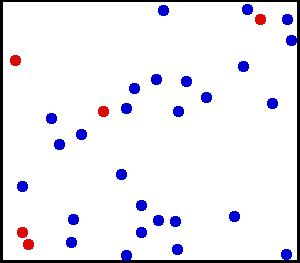Kinetic theory
From Wikipedia, the free encyclopedia
The temperature of an ideal monatomic gas is a measure of the average kinetic energy of its atoms. The size of helium atoms relative to their spacing is shown to scale under 1950 atmospheres of pressure. The atoms have a certain, average speed, slowed down here two trillion fold from room temperature.
- This article applies to gases; see also Kinetic theory of solids
While the particles making up a gas are too small to be visible, the jittering motion of pollen grains or dust particles which can be seen under a microscope, known as Brownian motion, results directly from collisions between the particle and gas molecules. As pointed out by Albert Einstein in 1905, this experimental evidence for kinetic theory is generally seen as having confirmed the existence of atoms and molecules.

No comments:
Post a Comment